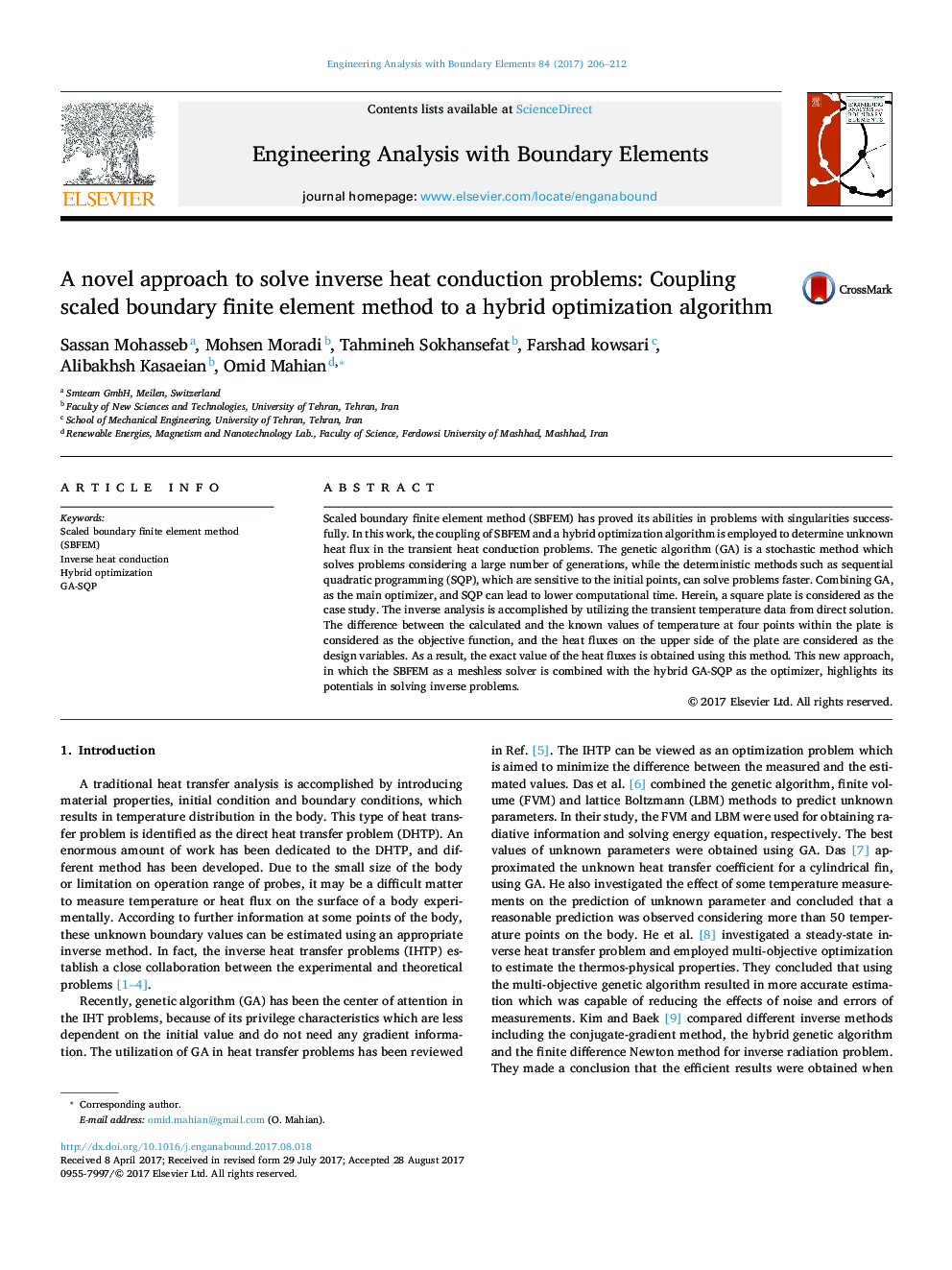| Article ID | Journal | Published Year | Pages | File Type |
|---|---|---|---|---|
| 4965952 | Engineering Analysis with Boundary Elements | 2017 | 7 Pages |
Abstract
Scaled boundary finite element method (SBFEM) has proved its abilities in problems with singularities successfully. In this work, the coupling of SBFEM and a hybrid optimization algorithm is employed to determine unknown heat flux in the transient heat conduction problems. The genetic algorithm (GA) is a stochastic method which solves problems considering a large number of generations, while the deterministic methods such as sequential quadratic programming (SQP), which are sensitive to the initial points, can solve problems faster. Combining GA, as the main optimizer, and SQP can lead to lower computational time. Herein, a square plate is considered as the case study. The inverse analysis is accomplished by utilizing the transient temperature data from direct solution. The difference between the calculated and the known values of temperature at four points within the plate is considered as the objective function, and the heat fluxes on the upper side of the plate are considered as the design variables. As a result, the exact value of the heat fluxes is obtained using this method. This new approach, in which the SBFEM as a meshless solver is combined with the hybrid GA-SQP as the optimizer, highlights its potentials in solving inverse problems.
Related Topics
Physical Sciences and Engineering
Computer Science
Computer Science Applications
Authors
Sassan Mohasseb, Mohsen Moradi, Tahmineh Sokhansefat, Farshad kowsari, Alibakhsh Kasaeian, Omid Mahian,
